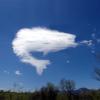Tagged with:

Paul Roberts replied to RealtreeByGod's topic in Fishing Tackle

Paul Roberts replied to Harold Scoggins's topic in Bass Boats, Canoes, Kayaks and more

Paul Roberts replied to wbassrogue's topic in General Bass Fishing Forum

Paul Roberts replied to RyanDR's topic in Bass Boats, Canoes, Kayaks and more

Paul Roberts replied to cjam93's topic in General Bass Fishing Forum

Paul Roberts replied to FCPhil's topic in General Bass Fishing Forum

Paul Roberts replied to Largies4Life's topic in General Bass Fishing Forum

Paul Roberts replied to Largies4Life's topic in General Bass Fishing Forum

Paul Roberts replied to Fishingintheweeds's topic in General Bass Fishing Forum
We have placed cookies on your device to help make this website better. You can adjust your cookie settings, otherwise we'll assume you're okay to continue.

